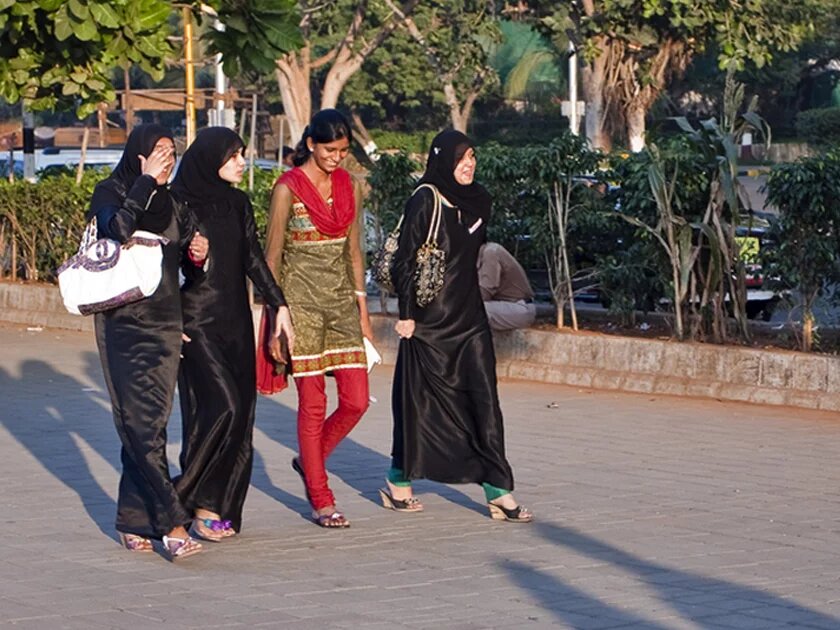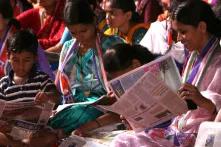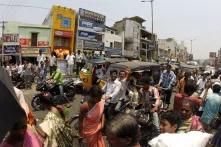
This was the first time I was eligible to vote. Hence there was a greater interest on my part to see, observe and participate in the biggest election event of the world. To be a participant meant to select my own elected representatives and thereby vicariously participate in governance and determine my own future. A future which would result in an India which was economically developed; where the basic necessities of food, water, sanitation, shelter, power and other amenities were available to all; where a burgeoning middle class of about 250 million young people were able to meet their aspirations for a better future; and above all where there was a government which could provide good governance free of corruption.
"Polling officials in the most remote areas"
The first thing which struck me was the enormity of conducting these elections-543 parliamentary seats, an electorate of about 800 million, which is more than the total population of Europe, diversity of the States in terms of parliamentary seats, with Nagaland, Mizoram and Sikkim having 1 seat each and a behemoth state like Uttar Pradesh which has 80 seats.
It made me wonder how the Election Commission would organize polling booths, security, voting machines and other logistic arrangements in such a huge country, rather a sub-continent. I wondered how they would get to remote areas like Ladakh in J&K where the terrain ranged from 2,900 metres to 5,400 metres, where a polling booth was required to be set up for 10 voters and where polling officials had to be airlifted or had to trek for days to reach the voters. I could now comprehend the reasons for the elections being spread over 9 phases in 5 weeks i.e. from April 9 to May 15.
"Parties trading charges against each other"
The run up to the elections was all about parties articulating their agenda and trading charges against each other. Since the last 30 years India has been ruled by coalitions and the single party rule ended in 1989. This time too the contest had the air of a heavyweight boxing contest as the ruling UPA coalition, headed by the Congress was pitted against the challenger NDA, led by the BJP. While the BJP was quick of the mark by announcing the Gujarat Chief Minister Narendra Modi as its prime ministerial candidate, the Congress lagged behind due to the dithering in announcing Rahul Gandhi as its PM candidate. The BJP ran a slick US style campaign using the print, electronic and the social media. The speaking skills of incumbent PM Manmohan Singh and Congress party leaders Sonia and Rahul Gandhi, or rather its absence, was also in sharp contrast to the oratorical skills of Modi.
The UPA, which had been in power since 2004, was facing charges of misgovernance, corruption, policy paralysis and above all a massive anti incumbency due to its inability to deliver. While the BJP promised economic development, growth, employment, price stability and above all hope for a better future, the Congress party had a negative agenda focused on the past of Narendra Modi tainted by the Godhra communal riots, which in 2002 had resulted in the death of about 800 Muslims when Modi was the CM of Gujarat.
"All others were flattened by the BJP tsunami"
This was not to say that the BJP did not follow its own divisive and communal agenda. The stratification of Indian society on lines of caste, religion, ethnicity, geography and other fault lines was never as evident as during the elections. At the same time never was the unity of the country as visible with young and old, rich and poor, man and woman participating in this whirlpool of democracy where all differences blend in the queue outside the polling booths.
The suspense ended on May 16 (with electronic voting machines there is hardly any suspense with the results known in almost hours) with a massive majority for the BJP and its NDA allies, proving all the pundits wrong. While almost all the exit polls had predicted a victory for the BJP and NDA, no one had been able to see the clean sweep in their favour. The BJP got a simple majority on its own with 282 seats and 336 seats with its allies. The Congress was reduced to a rump with 44 seats and was completely wiped out in the states of Rajasthan, Gujarat, Delhi, Himachal Pradesh, Goa, Jharkhand, Tamilnadu and Odisha where it could not win even a single seat. Never before had the Grand Old Party of India been reduced to such a pathetic state. The newly born Aam Admi Party with its anti corruption plank, which did exceptionally well in the Delhi Assembly elections in December 2013 and had raised the expectations of the middle and lower classes, was punished for its refusal to govern Delhi despite the mandate of the people. Except for regional parties like the AIIDMK in Tamil Nadu, TMC in West Bengal and BJD in Odisha, all others were flattened by the BJP tsunami.
"Will the victor be able to meet the expectations and dreams of 1.27 billion pepole?"
As the euphoria of victory fades, the tough task of governance confronts the victor. Will it be able to meet the expectations and dreams of the 1.27 billion population? Will it be able to unleash and harness the energy and drive of India's youth and propel the country on a high growth trajectory? India's GDP growth has almost halved in the last 5 years from about 9 percent to less than 5 percent and industrial growth has plummeted to negative levels. Foreign investors who were queuing to invest in India have lost faith in its growth story.
Will the new PM modify and soften the Hindutva ideology of the RSS to encompass India's cultural diversity and religious plurality as Atal Bihari Vajpayee, one of his predecessors from the BJP and one of India's most loved PM, could do? The absence of a credible and strong opposition, an essential bulwark of a robust democracy, places even a greater responsibility on the BJP and its allies. Will it be able to shoulder this responsibility? The challenges emanating from our volatile neighborhood would also require diplomatic management and responses.
While the long term will answer these questions, some indications would be available in near future. More of it in my next rumination .

